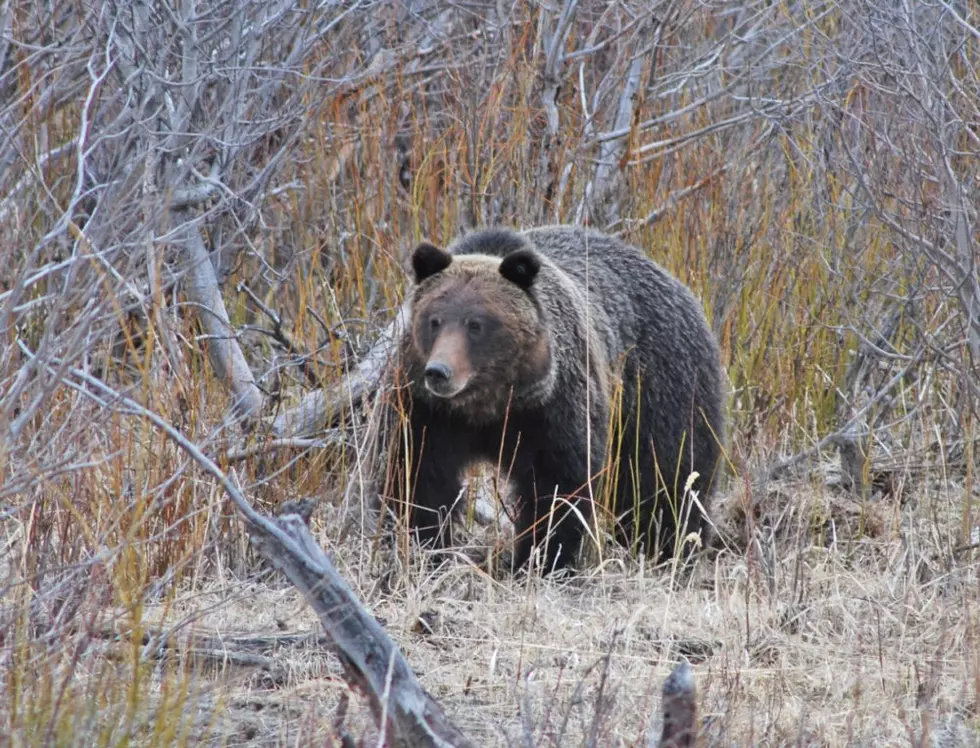
Groups sue USDA Wildlife Services in Missoula over grizzly bear deaths
Laura Lundquist
Three wildlife groups are suing the federal government over its failure to consider how Montana’s grizzly populations are affected by intentional bear removals, particularly in connectivity corridors outside the main recovery areas.
On Wednesday, three organizations - WildEarth Guardians, Western Watersheds Project and Trap Free Montana - sued the U.S. Department of Agriculture’s Wildlife Services and the U.S. Fish and Wildlife Service in Missoula federal district court for allowing Wildlife Services to continue its planned removals of grizzly bears, which are still protected under the Endangered Species Act.
The lawsuit also challenges the Wildlife Service’s widespread killing of other predators, including black bears, gray wolves, coyotes and mountain lions, which often adds to the number of grizzly bear deaths and injuries.
Wildlife Services provides livestock producers with assistance with predator control, normally through lethal means although Wildlife Services also uses nonlethal techniques.
In 2021, Wildlife Services purposely killed more than 400,000 wild animals, including smaller species like bobcats, foxes, beavers and river otters. Through trapping, it also accidentally killed almost 2,800 animals, according to USDA reports.
While Wildlife Services works for the Department of Agriculture, the U.S. Fish and Wildlife Service falls under the Department of the Interior, and the two departments have quite different missions, breeding tension.
With species that aren’t federally protected, Wildlife Services can work alone and unhindered, although it receives additional funding to kill predators from the Montana Department of Livestock, the Rocky Mountain Elk Foundation and Montana Sportsmen for Fish and Wildlife. The Montana Department of Livestock said it would not be able to “absorb the financial burden” of Wildlife Services’ predator removal program if the program were abandoned, according to court records.
Because grizzly bears are still protected, Wildlife Services and Montana Fish, Wildlife & Parks must work with the U.S. Fish and Wildlife Service to decide whether to kill or move a grizzly bear that’s attracting attention. Under a specific section of the Endangered Species Act - Section 4(d) - Wildlife Services and others can kill or move - actions denoted by the legal term “take” - only bears that have been positively associated with killing livestock or that present a demonstrable threat to human safety.
However, in March 2020, during the Trump administration, the U.S. Fish and Wildlife Service issued a memorandum authorizing Wildlife Services to use live traps and preemptively translocate grizzlies found in areas where they could come into conflict with humans. The lawsuit says the 2020 memorandum authorizes activities that are not allowed in Section 4(d) because bears haven’t been involved in a conflict.
The lawsuit adds that such preemptive removals could intercept bears that are making their way between recovery areas. If bears can’t migrate between areas, it threatens overall species survival.
“The best available science reveals the lack of connectivity and genetic interchange between grizzly bears in Montana’s recovery zones, and the bears’ absence from the Bitterroots remains a threat to long-term recovery of the species in the lower 48 States,,” said Matthew Bishop, Western Environmental Law Center attorney representing the groups. “But the agencies aren’t taking this into account before killing and removing dispersing bears.”
In 2021, the U.S. Fish and Wildlife Service wrote a species status assessment for grizzly bears. Among other things, the assessment said connectivity between recovery areas is important to maintaining species viability because it will prevent inbreeding among the smaller populations in the recovery areas.
The USFWS assessment also identified human-caused mortality, including management removals in response to conflicts with humans and livestock interests, as a threat to grizzly bears and an impediment to long-term viability and recovery.
Wildlife Services has estimated that it won’t intentionally take more than 21 grizzly bears in Montana annually within the three active recovery areas, but it proves no estimate for bears taken outside the recovery areas. It also estimates no more than five bears will be taken accidentally in a 20-year period.
In May 2021, when Wildlife Services issued a new decision approving its Montana predator removal program, its environmental assessment didn’t include information from the USFWS’s species survival assessment and only considered the Wildlife Service’s actions within the grizzly recovery areas. The lawsuit said the grizzly bears that Wildlife Services kills or removes between recovery areas should also be considered and reported.
In addition, the lawsuit argues, Wildlife Services used a biological assessment published in 2010, which found that Wildlife Services predator control activities would likely adversely affect grizzly bears. Although Wildlife Services added additional information since then, the biological assessment only addresses the accidental taking of grizzly bears, not the increasing intentional take occurring now.
In 2017 and 2018, Wildlife Services purposely killed or removed 11 grizzly bears each year. That increased to 16 grizzlies in 2019, according to court documents.
In December, Montana Wildlife Services specialist Kraig Glazier reported to the Northern Continental Divide Ecosystem committee that 20 grizzlies were killed in the NCDE alone due to livestock depredation, even though Glazier said the livestock loss wasn’t that high.
Glazier and FWP biologists shot seven of those bears after FWP Region 4 supervisor Gary Bertellotti approved the use of rifles for the first time. Bertellotti said during the meeting that it’s sometimes too hard to prove which bear was responsible.
For that reason, the lawsuit argues that Wildlife Services should have to conduct a more intensive environmental impact statement of its predator removal program, rather than an environmental assessment.
“Wildlife Services has once again relied on shoddy environmental analysis to rubber-stamp the killing of native carnivores on behalf of the private livestock industry,” said Lizzy Pennock, WildEarth Guardians carnivore coexistence advocate. “It’s time for the program to prioritize the use of science-backed nonlethal coexistence measures instead of continuing to recklessly butcher wildlife.”
Contact reporter Laura Lundquist at lundquist@missoulacurrent.com.
